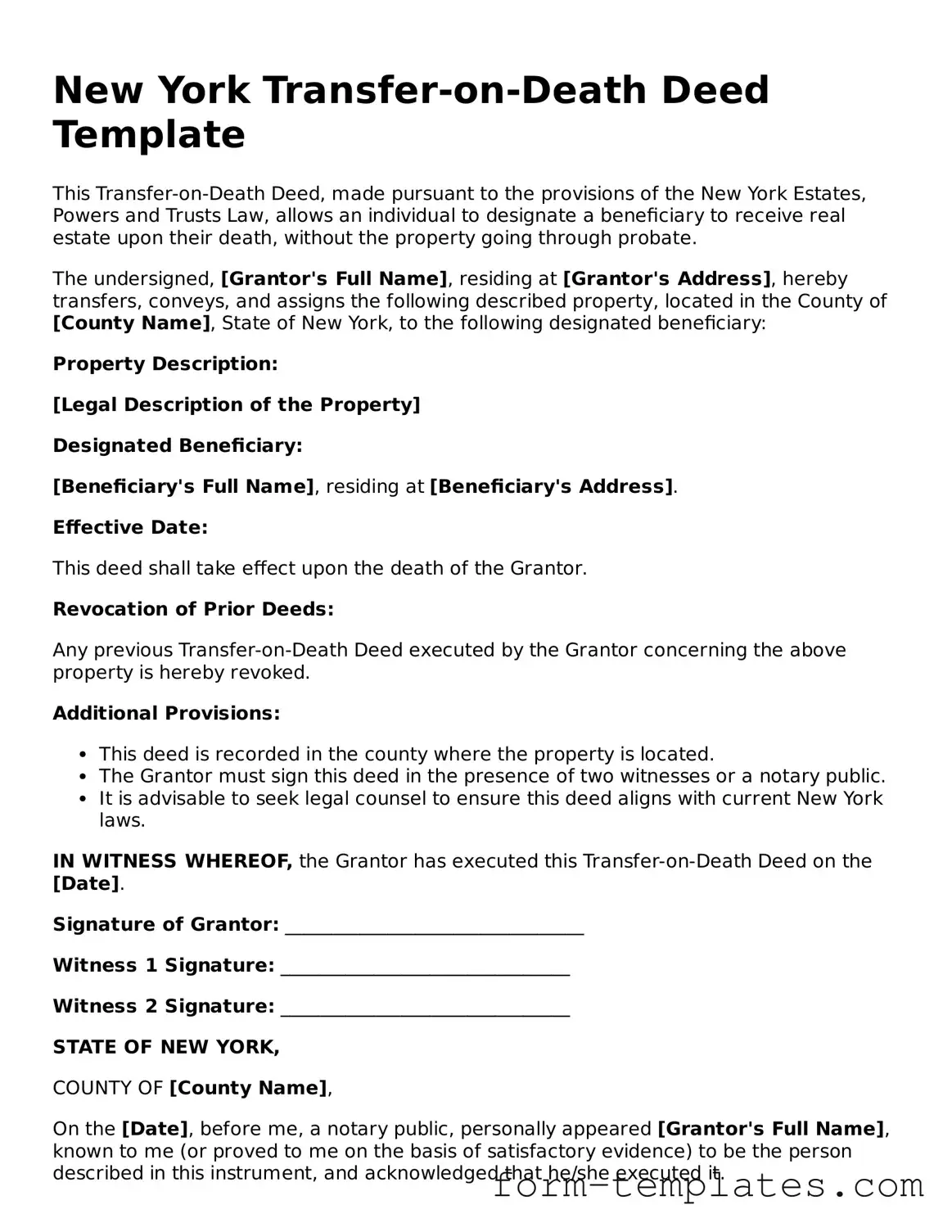New York Transfer-on-Death Deed Template
This Transfer-on-Death Deed, made pursuant to the provisions of the New York Estates, Powers and Trusts Law, allows an individual to designate a beneficiary to receive real estate upon their death, without the property going through probate.
The undersigned, [Grantor's Full Name], residing at [Grantor's Address], hereby transfers, conveys, and assigns the following described property, located in the County of [County Name], State of New York, to the following designated beneficiary:
Property Description:
[Legal Description of the Property]
Designated Beneficiary:
[Beneficiary's Full Name], residing at [Beneficiary's Address].
Effective Date:
This deed shall take effect upon the death of the Grantor.
Revocation of Prior Deeds:
Any previous Transfer-on-Death Deed executed by the Grantor concerning the above property is hereby revoked.
Additional Provisions:
- This deed is recorded in the county where the property is located.
- The Grantor must sign this deed in the presence of two witnesses or a notary public.
- It is advisable to seek legal counsel to ensure this deed aligns with current New York laws.
IN WITNESS WHEREOF, the Grantor has executed this Transfer-on-Death Deed on the [Date].
Signature of Grantor: ________________________________
Witness 1 Signature: _______________________________
Witness 2 Signature: _______________________________
STATE OF NEW YORK,
COUNTY OF [County Name],
On the [Date], before me, a notary public, personally appeared [Grantor's Full Name], known to me (or proved to me on the basis of satisfactory evidence) to be the person described in this instrument, and acknowledged that he/she executed it.
Notary Public: ________________________________
My Commission Expires: ________________________
